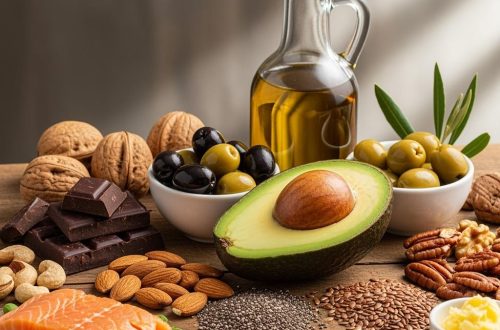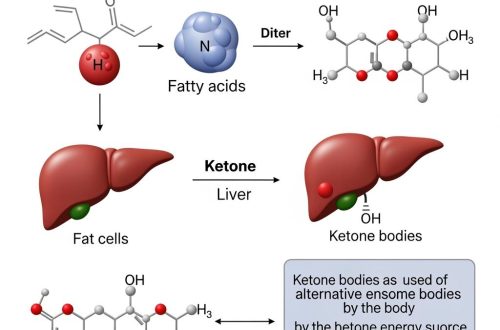The ketogenic diet has gained immense popularity over the years for its potential health benefits, including weight loss, improved energy levels, and better mental clarity. Among the various adaptations of the keto diet, the Targeted Ketogenic Diet (TKD) has emerged as a favorite among athletes, fitness enthusiasts, and individuals looking for a balanced approach to keto.
In this blog post, we’ll dive into everything you need to know about the Targeted Keto Diet, including how it works, its benefits, how it compares to other forms of keto, and practical tips to help you succeed.
What Is the Targeted Ketogenic Diet (TKD)?
The Targeted Ketogenic Diet is a modified version of the standard ketogenic diet (SKD). In TKD, individuals consume a small amount of fast-digesting carbohydrates before or after workouts to provide their bodies with an immediate energy source. This approach is ideal for those who are physically active, as it allows them to maintain the benefits of ketosis while improving their athletic performance.
The TKD bridges the gap between the Standard Ketogenic Diet (SKD), which restricts daily carbohydrate intake to around 20-50 grams, and the Cyclical Ketogenic Diet (CKD), which alternates between periods of high-carb and low-carb eating. It provides an effective way for active individuals to fuel their workouts without fully stepping out of ketosis.
How Does the TKD Work?
The TKD operates on the principle that consuming carbohydrates strategically around workouts can provide quick energy to fuel intense physical activity while minimizing the risk of disrupting ketosis.
Here’s how it works:
- Carb Timing:
- A small amount of fast-absorbing carbohydrates (typically 20-50 grams) is consumed 30 minutes to 1 hour before exercise.
- Alternatively, carbs can be consumed immediately after exercise to replenish glycogen stores.
- Insulin Response:
- The carbohydrates consumed pre- or post-workout are quickly burned off during exercise, reducing the likelihood of excess insulin production. A minimal insulin spike ensures that the body returns to ketosis soon after.
- Ketosis Maintenance:
- Because the carbs are used for energy during exercise, they don’t interfere with the body’s ability to produce ketones. For most people, ketosis resumes within a few hours post-exercise.
- Glycogen Replenishment:
- High-intensity or prolonged exercise can deplete glycogen stores in the muscles. TKD ensures these stores are replenished efficiently without requiring a full carb refeed.
Benefits of the Targeted Ketogenic Diet
The TKD offers several advantages, particularly for individuals who struggle to perform at their best on a strict Standard Ketogenic Diet. Here are the key benefits:
1. Improved Athletic Performance
- High-intensity workouts, such as weightlifting, sprinting, or CrossFit, rely on glycogen (stored carbs) for energy. The TKD ensures you have enough glycogen available to power through these activities.
- With TKD, you can perform at your peak without feeling fatigued or experiencing a dip in performance.
2. Enhanced Recovery
- Consuming carbs post-workout helps replenish glycogen stores, speeding up recovery and reducing muscle soreness.
- This allows you to train more frequently and with greater intensity.
3. Maintaining Ketosis
- Unlike the Cyclical Ketogenic Diet, which involves entire days of high-carb eating, the TKD allows you to stay in ketosis most of the time. This means you continue to enjoy the benefits of a ketogenic lifestyle, such as fat burning and mental clarity.
4. Flexibility
- The TKD provides a more flexible approach to keto, particularly for those with an active lifestyle. You don’t have to worry about feeling sluggish or compromising your workouts due to carb restrictions.
5. Reduced Risk of Muscle Loss
- Intense exercise without adequate glycogen can lead to muscle breakdown. By strategically incorporating carbs, you protect your lean muscle mass while still burning fat for energy.
Who Should Try the Targeted Ketogenic Diet?
The TKD is not for everyone. It’s best suited for individuals who are physically active and engage in moderate to high-intensity exercise. Here’s a breakdown of who might benefit from this approach:
- Athletes and Fitness Enthusiasts: Those participating in activities like weightlifting, HIIT, CrossFit, or endurance sports.
- Active Keto Beginners: Individuals transitioning to keto who still want to maintain their workout routines.
- Bodybuilders and Powerlifters: People looking to optimize their performance during strength training sessions.
- Recreational Exercisers: Those who want to incorporate carbs occasionally to boost energy and performance.
On the other hand, if you’re sedentary or engage in only low-intensity activities like walking or yoga, the Standard Ketogenic Diet is likely sufficient, and you may not need the extra carbs.
How to Implement the TKD
Implementing the Targeted Ketogenic Diet requires careful planning and attention to detail. Follow these steps to get started:
1. Determine Your Carb Intake
- Start with 20-50 grams of fast-digesting carbs before or after your workout. The exact amount depends on factors like your body weight, activity level, and exercise intensity.
- Experiment with different amounts to find what works best for you.
2. Choose the Right Carbs
- Opt for carbs that are low in fiber and fast-digesting to ensure they’re quickly absorbed and utilized for energy. Good options include:
- Dextrose or glucose powder
- Ripe bananas
- White rice
- Rice cakes
- Honey
- Sports drinks (with minimal additives)
- Avoid high-fiber or slow-digesting carbs like oats or sweet potatoes, as they may take too long to digest.
3. Timing Is Key
- Pre-Workout: Consume carbs 30-60 minutes before your workout to provide an energy boost.
- Post-Workout: If you prefer, you can consume carbs immediately after your workout to replenish glycogen stores.
4. Track Your Macros
- Use a food-tracking app to monitor your daily carb intake and ensure you stay within your keto-friendly range (typically under 50 grams of net carbs per day, excluding pre- or post-workout carbs).
5. Monitor Ketosis
- Use tools like urine strips or a blood ketone meter to check your ketone levels and ensure you’re staying in ketosis.
- Most people find that their ketone levels return to normal within a few hours after a workout.
Common Mistakes to Avoid
When starting the TKD, it’s easy to make mistakes that can derail your progress. Here are some pitfalls to watch out for:
- Consuming Too Many Carbs:
- Overeating carbs can kick you out of ketosis. Stick to the recommended amount for your activity level.
- Choosing the Wrong Carbs:
- Avoid slow-digesting or high-fiber carbs, as they may not provide the quick energy needed for workouts.
- Not Timing Your Carbs Properly:
- Eating carbs too far in advance or too late after a workout can reduce their effectiveness.
- Neglecting Protein and Fat:
- Ensure your overall diet remains balanced, with adequate protein and healthy fats to support recovery and satiety.
How the TKD Compares to Other Keto Variations
Here’s a quick comparison of the TKD with other popular forms of keto:
| Diet Type | Carb Intake | Best For |
|---|---|---|
| Standard Keto Diet | 20-50g per day | Sedentary individuals or low-intensity activities |
| Cyclical Keto Diet | High-carb days (1-2 per week) | Bodybuilders or athletes needing glycogen replenishment |
| Targeted Keto Diet | 20-50g around workouts | Active individuals seeking energy for intense workouts |
The TKD offers a middle ground, providing flexibility for active individuals without the need for full carb-loading days.
Sample TKD Meal Plan
Here’s a sample day on the Targeted Ketogenic Diet:
- Breakfast: Scrambled eggs with avocado and spinach (low-carb, high-fat).
- Pre-Workout Snack: 1 ripe banana or 1 scoop of dextrose powder mixed with water.
- Lunch (Post-Workout): Grilled chicken with cauliflower rice and olive oil.
- Snack: A handful of macadamia nuts or keto-friendly protein bar.
- Dinner: Salmon with zucchini noodles and a creamy garlic sauce.
- Evening Snack: Greek yogurt (unsweetened) with a few raspberries.
The Targeted Ketogenic Diet is an excellent option for those who want to combine a ketogenic lifestyle with an active lifestyle. By strategically incorporating carbs around workouts, you can enhance your energy levels, improve performance, and stay in ketosis.
As with any diet, consistency and self-experimentation are key. Take the time to find the right carb amounts, timing, and foods that work for your body and fitness goals. With the TKD, you don’t have to choose between performance and ketosis—you can have the best of both worlds.
Are you ready to give the Targeted Ketogenic Diet a try? Let me know your thoughts or questions in the comments below!







One comment on “The Ultimate Guide to the Targeted Keto Diet (TKD)”
Comments are closed.